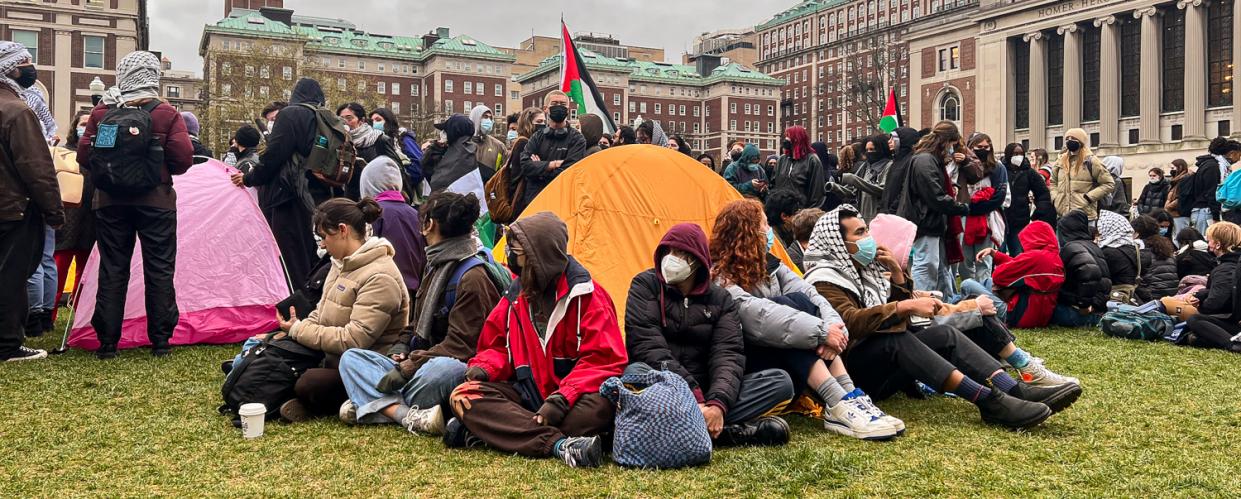
May 03 2024 English

April 30 2024 Arabic
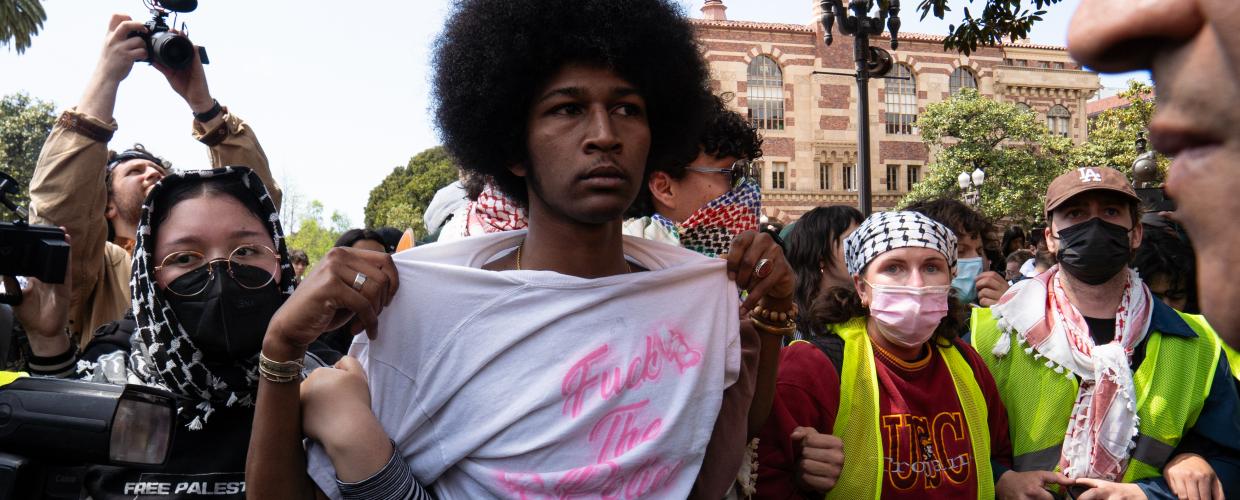
April 29 2024 English
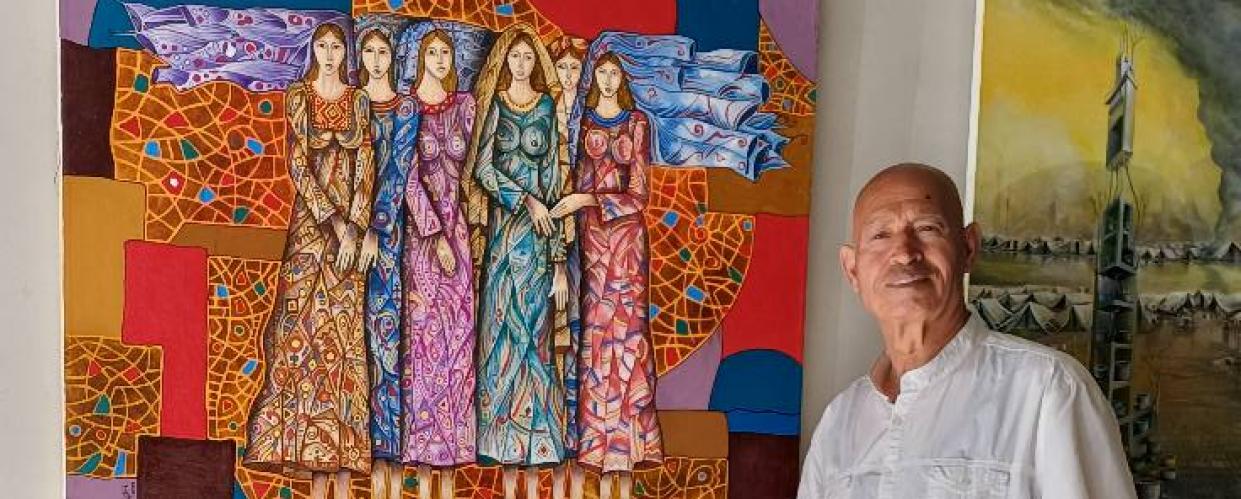
April 29 2024 Arabic
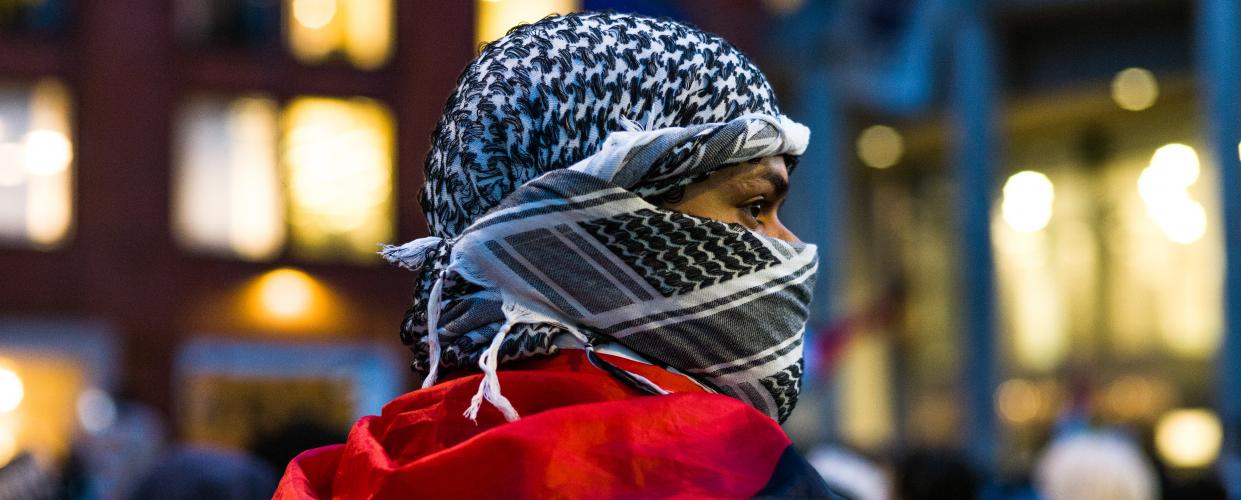
April 28 2024 English
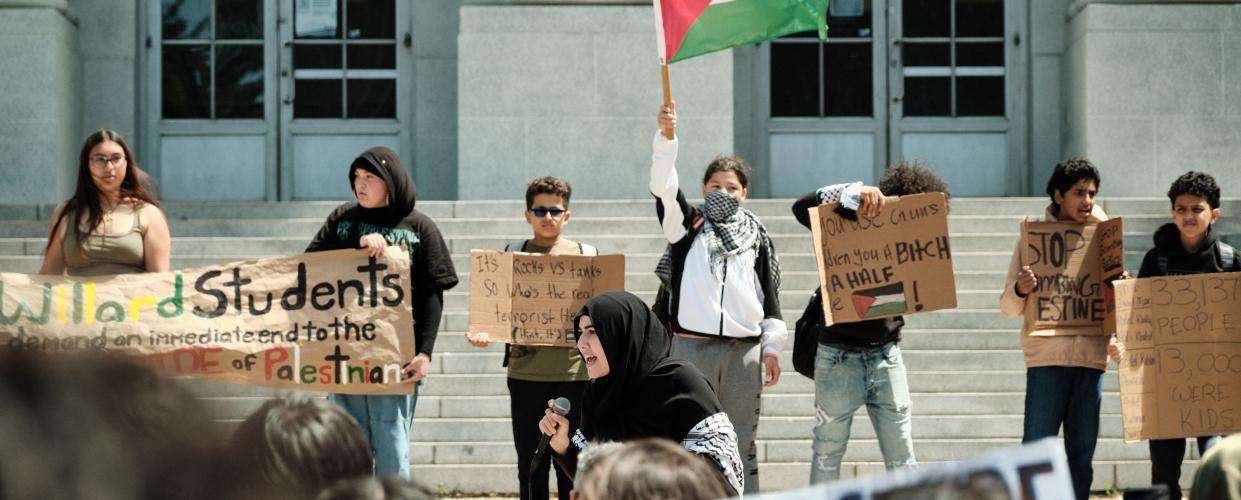
April 27 2024 English
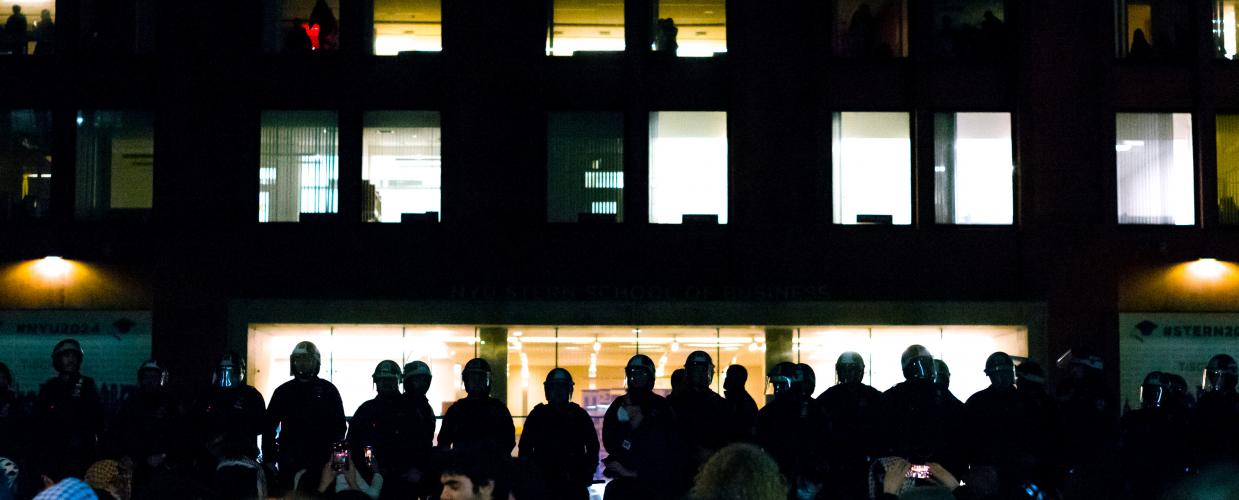
April 27 2024 English
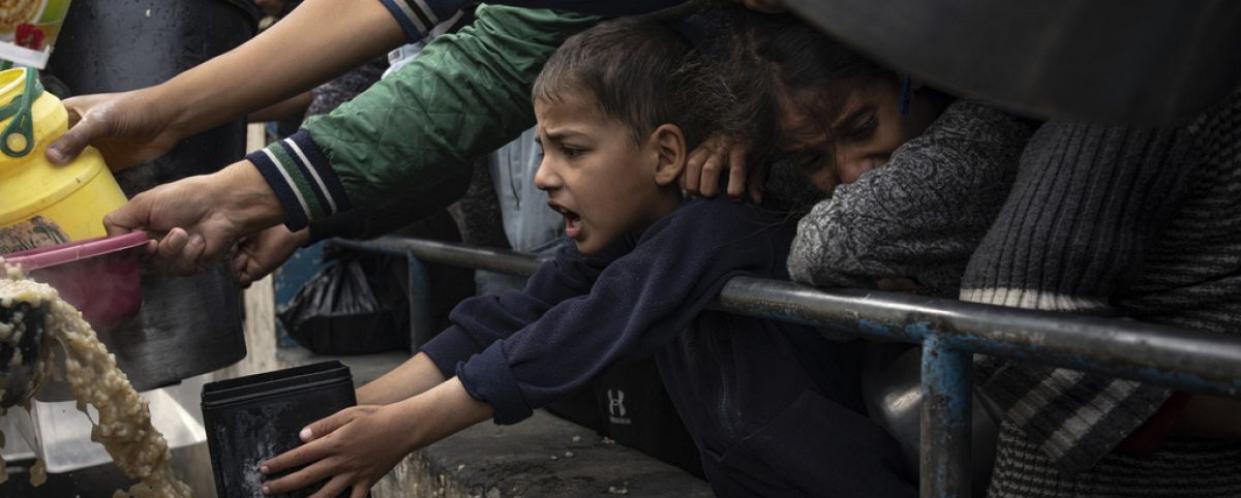
April 26 2024 Arabic
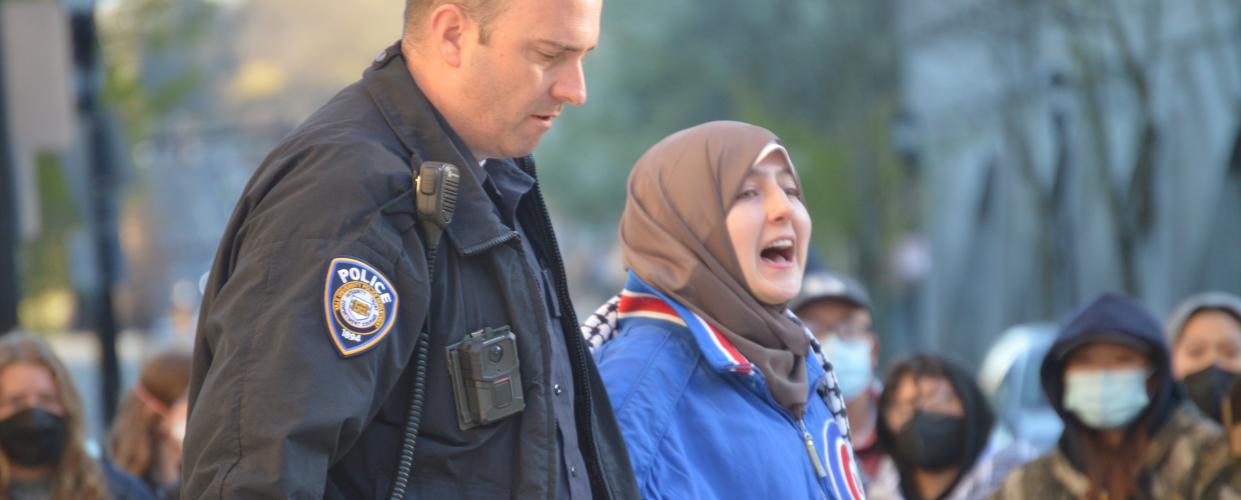
April 25 2024 English
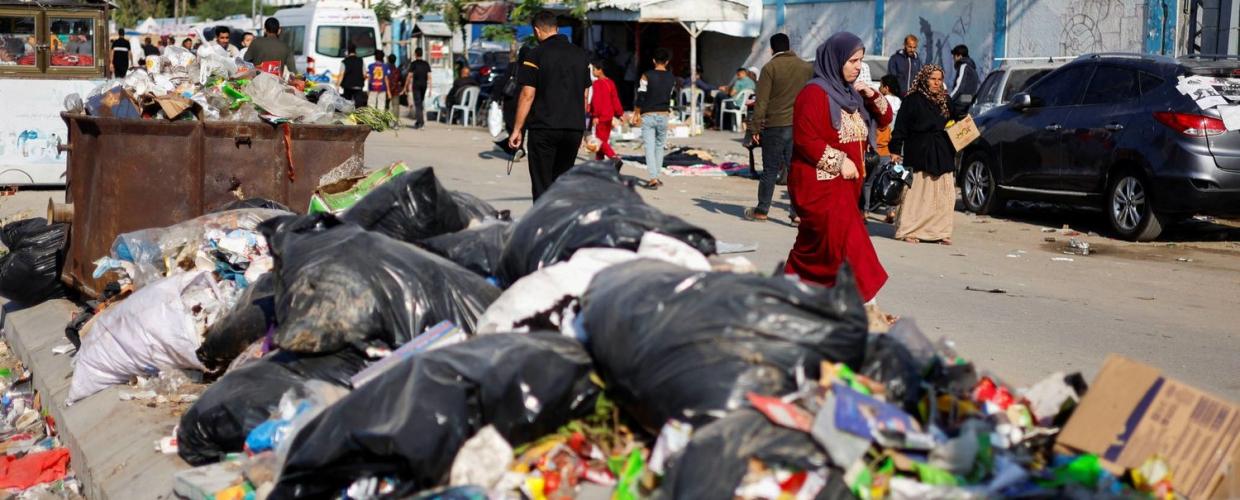

While attempting to document the countless war crimes that the Israeli regime has committed against the people of Palestine — particularly the people of Gaza — since Oct. 7, the many faults in the international legal system have been exposed.
In addition to the breaches of international law that have taken place during the accelerated genocide of the Palestinian people, the overt availability of evidence has been met with inaction — or outright hostility — from world leaders.
While many find comfort in the concept of protection through “Universal Jurisdiction” regarding crimes against humanity, of what practical use are such concepts to the people subject to actual, physical, and visceral violence? This is especially so when a case is clear-cut, with the ongoing ethnic cleansing of Palestinians, as well as with the 75-year-long history of this erasure. What reprieve from grief is provided through these imaginary and increasingly redundant frameworks?
Still, we must attempt to keep track.
Thus far, throughout more than 80 days of mass-scale Israeli assaults throughout Gaza, the West Bank, and ‘48 territories (the heartland) — during and after the brief “humanitarian pause,” — the Occupation Forces, with certainty, have committed tens of thousands of war crimes and have broken numerous international laws.
While the following compilation is non-exhaustive, the evidence for the listed crimes is overwhelming. As the scope of this work is limited, this should be a call for immediate, further investigation and subsequent prosecution through capable parties. This article will cover issues relating to the breaching of “treaty law” — such as violations of articles within the Geneva Conventions (1949) — along with other infringements on separate conventions to which the Israeli state is either a signatory or has ratified, such as the Convention on the Rights of the Child (CRC), the Genocide Convention, etc.
The following overview also considers violations of law under universal jurisdiction, namely customary international humanitarian law (IHL), understood to be a certain code of conduct during conflict accepted as a specific branch of international law, as well as “grave violations” of the Geneva Conventions and crimes against humanity or war crimes (under mandatory universal jurisdiction, of which no individual, nor state, is exempt). The below only refers to violations that are glaring and have a foundational basis to be brought forth in front of respective courts, i.e., the Israeli regime has either signed, ratified, or enforced treaties related to these crimes or is otherwise bound to compliance.
The definition of genocide — as well as the crimes that are associated with genocide — in the 1948 UN Genocide Convention is: “In the present Convention, genocide means any of the following acts committed with intent to destroy, in whole or in part, a national, ethnical, racial or religious group, as such:
(a) Killing members of the group; (b) Causing serious bodily or mental harm to members of the group; (c) Deliberately inflicting on the group conditions of life calculated to bring about its physical destruction in whole or in part; (d) Imposing measures intended to prevent births within the group; (e) Forcibly transferring children of the group to another group.
Article III continues:
“The following acts shall be punishable: (a) Genocide; (b) Conspiracy to commit genocide; (c) Direct and public incitement to commit genocide; (d) Attempt to commit genocide; (e) Complicity in genocide.
These are clear-cut definitions backed by ample evidence, such as testimony, video testimony, international observer testimony, and forensic evidence. Given the vast amounts of evidence available on the Israeli regime’s extermination of the Palestinian people, doubting Israeli actions and intentions toward the civilian population in Gaza increasingly indicates complicity rather than ignorance. Some argue that while genocidal intent is certainly present due to the continuous hateful rhetoric from several high-ranking Israeli state officials on public platforms — wherein the intent to ‘flatten’ Gaza has been made — this alone cannot legally prove genocide. However, conspiracy or incitement to commit genocide is a crime in itself, and the Genocide Conventions include the obligation of signatories also to prevent genocide. The events unfolding on an hourly basis are testimony to both the lack of prevention and, indeed, the act of genocide itself.
From the recorded videos of Israeli Occupation Forces in Gaza bombing civilian infrastructure in an attempt to kill as many Palestinians as possible while crippling the societal function, from the soldiers shamelessly inviting Israeli journalists to participate in violence through remotely-triggered explosions, or through the widespread publicity of looting Palestinian property and torturing Palestinian prisoners on social media, this is perhaps the first livestreamed genocide. The Israeli regime and its allies claim to be attempting to minimize civilian casualties. Still, footage from all parties — settlers, Occupation Forces, and Palestinians — exposes this to be a farce, a talking point intended to justify war crimes to the international community.
This Israeli propaganda is not only considered to be incitement (an indictable crime of its own) but also punishable under Article III(c) of the Genocide Convention above. With over 21,000 civilian casualties — the vast majority of which are children, women, the disabled, and the elderly — and tens of thousands maimed, it cannot be denied that the prohibited acts listed under Article II(a) and (d) are present. The deliberate targeting of medical facilities and forcibly displaced individuals seeking shelter at these facilities — as well as the deliberate bombardment of schools, holy spaces, refugee camps, and residential towers — cannot be overlooked. Under this convention, Israel has violated both of these articles. These violations — added to the clear genocidal intent proclaimed by Israeli leadership, as well as the targeting of a particular racial group — constitute the punishable crime of genocide. Experts — such as the former Chief Prosecutor for the ICC — are now emphasizing that the 17-year-long siege of Gaza can also be considered genocide under Article II(c).
Under this umbrella, a number of different offenses can be cited; adding to the conspiracy to commit genocide, there is evidence of Israeli propaganda, considered to be incitement, by political and media figures. The premise of the disproportionate attacks has been based on lies — including the beheading of babies — all of which have been debunked by not only international human rights groups but even by Israeli sources, such as Ha’aretz.
As mentioned, the death toll in Gaza — without considering persons still under the rubble — has surpassed 21,000 people. Civilians are considered Protected Persons under all four Geneva Conventions and through customary law. Specifically, the following persons are protected by international humanitarian law: “wounded, sick and shipwrecked members of the armed forces who have ceased to take part in the hostilities; prisoners of war; civilian persons who because of a conflict or occupation are in the power of a Party whose nationality they do not possess; medical and religious personnel; Parlementaires; civil defense personnel; personnel assigned to the protection of cultural property.” These categories are all specified amongst GC I, Art. 13, GC II, Art. 13, GC III, Art. 4, and GC IV, Art. 4.
The onslaught on Gaza has resulted in one of the highest civilian casualties in modern warfare; despite laughable claims by U.S. Foreign Secretary Blinken that Israel is doing its best to minimize civilian casualties. While Israel attempts to frame this as a war against Hamas, they have not listed any clear military objectives. If the targeting of resistance leadership is the military aim, they must ensure to exhaust all possible options before an assault, let alone indiscriminate bombardment. Indeed, the customary principles of proportionality and distinction (Rules 1 and 14 of Customary IHL) between military and non-military fighters apply in this context, particularly Israeli claims of targeting resistance fighters. As we have seen in real-time, the use of disproportionate force on civilians and civilian infrastructure is rampant. Failure to comply with these principles by disproportionally attacking nonmilitary targets can amount to war crimes.
While journalists are not listed as protected persons, they are technically considered civilians, the modern world has come to understand it as a protected profession. Israel has killed at least 106 Palestinian journalists and employed collective punishment in the targeting and killing of their families. It has also killed at least 300 health workers, 136 UN employees, and 40 civil defense members.
Not only have they breached the Geneva Conventions but a series of customary laws, for example, ‘Rule 11. Indiscriminate Attacks’ and ‘Rule 16. Target Verification.’
Furthermore, medical, religious, and civil defense personnel have not been simply part of these casualties but were actively targeted. Evidence of testimony from staff at different medical facilities highlights massacres on both human life and medical facilities, including al-Shifa Medical Complex, the Indonesian Hospital, and al-Ahli Hospital. Human Rights Watch and other organizations have called for this to be investigated as a war crime.
In addition to the disregard for the GC on the protection of civilians, by all means necessary, the war on Gaza continues to be what many cite as a war on children.
More than 8,663 children have been killed in Gaza. Among these, at least 33 were babies under the age of 1, and at least 444 were babies under three years old.
Moreover, there are instances, the most notable and well-documented being at the al-Shifa Hospital, where NICU babies were forcibly abandoned and left to the stage of decomposition due to the ground assault on the hospital complex.
This assault on children, either killing or fundamentally traumatizing them, is also a violation of treaty law; the CRC Ratified by Israel in 1991 is binding within Israel's jurisdiction, including in their military operations in Gaza. Among other violations, Israel has infringed upon children's right to life, as recognized by Art. 6 of CRC, the right to the highest standard of health (Art. 24), the right to family (Art. 16), and the right to education (Art. 39). Furthermore, as an occupying power, Israel violates Article 50 of the Fourth Geneva Convention, which pertains to preserving institutions dedicated to children through the targeting of schools.
Additionally, persons with disabilities have special protections during conflict both in customary international law and in treaty law. It is also important to note that, through generations of assaults on the Gaza strip, there are a substantial number of amputees, hence disabled persons, as a result of Israel’s wanton violence. This is in violation of the UN Convention on the Rights of Persons with Disabilities (which Israel ratified in 2012) through failing to take any measure to safeguard and address the particular needs of disabled individuals. It further violates a UN Security Council Resolution 2475 that reinforces the rights of persons with disabilities and the obligations of UN member states to address the disproportionate impact of conflict on persons with disabilities.
There are four fundamental principles of international humanitarian law based on the Hague and Geneva Conventions: “the principle of humanity, the principle of distinction between civilians and combatants, and between civilian objects and military objectives; the principle of proportionality, the principle of military necessity (from which flows the prohibition of superfluous injury and unnecessary suffering (ICRC Casebook, 2023).” The evidence presented in this essay — as well as the availability of countless other forms of testimony and other sources of evidence — highlights that, in the accelerated ethnic cleansing of Gaza, Israeli forces have violated all these principles.
While continuously citing the right to self-defense, the impudent regime bypasses all other rules of armed conflict. There is overwhelming evidence of the targeting of homes, eradicating entire families from the local population registry, and the targeting and occupying of hospitals, schools, universities, mosques, and churches. A notable example is the assault on the al-Shifa Medical Complex, where treatment of the most severe injuries was underway. This included individuals in critical condition and babies on life support. The assault on the resources and people of this hospital was under the guise of locating a “Hamas Command Center.” This shows absolutely no regard for Rule 16, Target Verification, whereby the party must do everything in its power to confirm the civilian space as a military target. Israeli forces destroyed the hospital, allowing the babies to decompose, and yet they still have no evidence to support this claim. A series of CNN reports have emphasized this, wherein a military commander offered evidence of a “schedule with the names of the guards protecting the tunnel entrance.” This was, in fact, a document with the days of the week written in Arabic.
In addition to the testimony, video images, and satellite images that have shown the destruction of whole areas in Gaza City, such as Tal al-Hawa, Sabra, and al-Shatti, amongst others, hundreds of thousands of Palestinians have been forcibly displaced. Many of these individuals have already been displaced by the Occupation at various points in their lifetimes. Journalist Ahmad Hijazi — amongst numerous other reporters — has witnessed and been subjected to this mass displacement of over one million people, with directives from the Israeli authorities to evacuate the north to the south and from the center to the south, displacing multigenerational refugees once again. The Occupation Forces use these movements as an opportunity to place Palestinians in areas that are more convenient for bombing. Israeli officials, generals, and legislators have not shied away from using the term “second Nakba” as a menacing promise to the people of Gaza.
Adel Maged, a Senior Judge in Egypt specializing in International Law, writes: “Forcible Transfer, under international law, the deportation or forcible transfer of a civilian is a serious international crime. According to international jurisprudence, deportation is the relocation of a population outside the borders of a state, while forcible transfer is the displacement of a population from the area they reside to another area or areas within the geographical boundaries of the state in question using coercive means, be they military actions or preventing access to food and other necessities. The international legal prohibition of these criminal acts aims to uphold the right of all peoples and groups to live in their homes and communities and enjoy their property in safety.”
In the case of Gazan civilians, herding the population through ‘evacuation orders’ while targeting the entire Gaza strip — under a premise of concern for civilian life — is a strategy to continue attacks on communities. The exemption to displacement is “legitimate displacement” under security arguments and is allowed under Rule 129 A of customary IHL. Citizens of the Gaza strip have received multiple evacuation orders and are being displaced to different areas. However, the fact that the bombardment is indiscriminate and that ground forces are invading “safe” areas in the southern part of the Strip indicates that there are no safe or livable places to be displaced to. Thus, this cannot be considered legitimate, particularly considering that a 17-year-long siege that has been severely bolstered since Oct. 7.
In the West Bank (for example, Masafer Yatta), land-grab and forced expulsion — to continue to expand illegal settlements — is a violation of GC IV. Art. 49, and the 1907 Hague Regulations. It is also considered a war crime under the Rome Statute, and while Israel has not ratified it, Palestine has, meaning legal recourse is still possible. Adding to this, the annexation of territory is a separate violation of Art. 2(4) of the UN Charter, and is considered a prohibited act of aggression in the Rome Statute. Israel violates its position as an occupying power whereby the Occupier is obligated to protect civilians rather than indiscriminately targeting them. Israel is also forbidden from moving its citizens into occupied territory, according to Rule 130 of IHL.
Forced expulsion is present in all parts of Palestinian territories; one notable case among thousands is that of the Imam of Al-Aqsa Mosque. His Jerusalem home is scheduled to be demolished by the IOF, which constitutes a violation against a religious figure, as well as forced displacement. It is also in breach of Rule 130.
“Perfidy” is a term used to generally mean a deceitful manner of gaining the trust of the “adversary” and subsequently betraying that trust. Additional Protocol 1 (Article 37/1) defines it as “acts inviting the confidence of an adversary to lead him to believe that he is entitled to, or obliged to accord, protection under the rules of international law applicable in armed conflict, with intent to betray that confidence.”
The ICRC Database notes that “the Hague Regulations prohibit ‘to kill or wound treacherously.’” Additionally, Protocol I prohibits the killing, injuring, or capturing “an adversary by resort to perfidy.” The Statute of the International Criminal Court uses the language of the Hague Regulations. While Israel did not ratify the Additional Protocols, it is a long-standing rule of customary international law outlined in some of the oldest international laws, including the Lieber Code (1863) and the Brussels Declaration (1874). It is also standard practice for national military manuals to prohibit perfidy. The Hague Convention is the basis of other bodies of international (humanitarian law). Perfidy has historically been considered a violation of customary law.
“We have seen perfidy in action in Gaza when the Israeli occupation forces ordered the civilian population in the northern part of the Strip to flee southward to avoid the bombing, only to subject the people who had just been displaced to the south to further bombardment,” declares Maged in his Al-Ahram article.
The Occupation forces are conducting the same act of perfidy in areas such as Khan Younis. The instance in which Israel guaranteed a so-called “safe corridor” for Gazans moving North to South and vice versa and proceeded to shoot civilians can be considered another act of perfidy.
Maged continues, “Moreover, the shelling has targeted the places international relief agencies had set up to shelter the displaced civilians, displacing them again to other parts of Gaza. Additionally, the mental health trauma suffered by the civilian population, especially women and children, caused by the knowledge that nowhere in Gaza is safe, is unimaginable, and a method of forcible deportation and transfer.”
Under Customary Law Rule 113, all parties in conflict “must take all possible measures to prevent the dead from being [allowed to spoil].” The “mutilation of dead bodies” is explicitly prohibited. Additionally, under Geneva Convention (I) for the Amelioration of the Condition of the Wounded and Sick in Armed Forces in the Field, Article 15, signatories have to take “all possible measures” to “search for the dead and prevent [them from] being despoiled.”
There is absolute and clear evidence to support the fact that, in Gaza, in the vicinity of the al-Shifa hospital, Israeli Occupation Forces dug up a mass grave, and corpses were removed. The general manager for the Palestinian Ministry of Health, Munir al-Barsh, reported on Nov. 18 that Israeli forces removed over 100 bodies from this grave in al-Shifa Hospital Complex. Euro-Med monitor has also documented Israeli military confiscation of dead bodies in the Indonesian Hospital, as well as from Salah al-Din Road. Some corpses were released to the International Committee of the Red Cross, but dozens of bodies are still being held.
Further to this, Euro-Med Monitor also raised concerns about organ theft, citing medical professionals who examined a number of corpses following their release. These professionals found the bodies missing corneas and cochleae, in addition to hearts, livers, and kidneys.
As a form of mutilation, Rule 113 specifically forbids harvesting organs from the dead during times of conflict. The Lieber Institute highlights: “One of the core components of the prohibition of organ harvesting is the regulation of medical procedures by the Additional Protocols (AP) to the Geneva Conventions. These expressly prohibit the removal of tissues or organs for transplantation in international armed conflicts (IACs) (AP I, art. 11) and any medical procedure that is not justified by the protected person’s state of health in noninternational armed conflicts (NIACs) (AP II, art. 5(2)(e)), which inevitably leads to prohibiting organ harvesting. Importantly, save for the exception of Article 11(3) of AP I, organ harvesting cannot be consented to during an armed conflict. Only persons who are excluded from the scope of Article 11 of AP I and Article 5(2)(e)) of AP II (i.e., those who are not considered enemy nationals or detained in relation to the armed conflict) may still donate organs within the context of an armed conflict.”
While Israel has not ratified all of the Additional Protocols, Palestine has. These articles are of essential utility to understand and develop the prohibition of organ thefts under customary IHL.
In 1957, Israel ratified the 1954 Hague Convention for the Protection of Cultural Property in the event of an Armed conflict becoming a State Party. The State of Palestine is also a State Party since 2012. The 1954 Convention was the first international treaty to protect cultural institutions and heritage. The Convention addresses artistic or historical monuments, archives, museums, and libraries, among other buildings housing cultural property. Under Article 4 of the Convention, all ratifying states must refrain from any acts of hostility against cultural property. Furthermore, Article 5 regulates the case of occupation and mandates the occupying power to cooperate with the legitimate occupied authorities to safeguard and preserve cultural property. Effectively, this intends to prevent cultural genocide.
On Nov. 29, Israel destroyed the Gazan Central Archives, which held thousands of important historical documents dating back over 150 years, relating to the city’s structure and history of its urban development. Yahya al-Sarraj, the head of Gaza Municipality, stated that Occupation Forces targeted numerous cultural centers, including the Rashad al-Shawwa Historical Cultural Centre, which houses a theater and central library, as well as a monument in the Memorial Park for the Unknown Soldiers.
The Geneva Convention (IV) relative to the Protection of Civilian Persons in Time of War, Article 55, stipulates that the Occupying Power “has the duty of ensuring the food and medical supplies of the population” and “may not requisition foodstuffs, articles or medical supplies available in the occupied territory.” Article 47 also stipulates, "Protected persons who are in occupied territory shall not be deprived, [...] of the benefits of the present Convention.” Failure to ensure food in the occupied territory may amount to the violation of Rule 53 of customary IHL, which explicitly forbids the starvation of the civilian population as a method of warfare.
Israel’s attacks over the last two months have been recognized as a “War of Starvation” by Euro-Med Monitor. The group’s report cited the cutting off all food supplies to Northern Gaza, along with the deliberate targeting of bakeries and water stores throughout the Strip. Israeli attacks also targeted flour shops, bakeries, agricultural zones, fishing boats, and storage centers belonging to relief organizations. As of Nov. 5, 11 bakeries in Gaza had been targeted and destroyed. The distribution of food to displaced families also became severely limited due to Israel’s ground invasion, further increasing the threat of widespread starvation and famine. It is painfully evident that Israel is deliberately targeting food supplies to Gazan citizens to further their genocidal objectives.
In addition to this blatant violation, Israel has also violated Geneva Convention (IV) Article 56, which states that the Occupying Power has the duty of ensuring and maintaining “the medical and hospital establishments and services, public health and hygiene in the occupied territory, with particular reference to the adoption and application of the prophylactic and preventive measures necessary to combat the spread of contagious diseases and epidemics.” In this sense, Rules 25 and 28 establish that it is customarily forbidden to target medical personnel and medical units, including hospitals and other medical infrastructure.
Israel has relentlessly attacked and deliberately targeted hospitals and medical infrastructure throughout the last two months. Israeli forces attacked the Indonesian Hospital, al-Quds Hospital, al-Shifa Hospital, the Turkish-Palestinian Friendship Hospital, and the International Eye Hospital. As a result of the destruction of this essential infrastructure, a UN report has stated that many more people could die of disease than bombings if the health system is not quickly repaired. They cited a lack of medicines, vaccination, safe water, and sanitation services as leading to a surge in gastrointestinal and infectious diseases, including cholera and gastroenteritis.
As the International Court of Justice confirmed in 2005 (Legal Consequences of the Construction of a Wall in the Occupied Palestinian Territory (Advisory Opinion) (9 July 2004) 2004 ICJ 136 para. 78), the oPt is an occupied territory under international law, regardless of Israeli efforts to deny or annex parts of it.
Article 42 of the Hague Convention IV explains that the definition of occupation “takes into account the effective control of the territory by a hostile authority and seeks to regulate the responsibility of such an authority. International humanitarian law stipulates that the definition of occupation only extends to territories where such authority has been established and can be exercised.” The conscious and active land-grabbing and forced expulsion and displacement of Indigenous Palestinians — which is a technique expanded all over Palestinian territory — evidences one of the ways in which Israel exercises its effective control over the territory. The siege and blockade of the Gaza Strip —where the Israelis control everything from water to food, travel, or energy — makes the Occupation even more stark.
Occupying powers are unconditionally accountable for the well-being and the provisions of basic necessities to civilian populations, as established by the relevant articles in the IV Hague Convention (Arts. 42-56) and Geneva Conventions. Furthermore, “contemporary international humanitarian law has clarified and added to the rights and duties of occupying forces, the rights of the populations of occupied territory, and the rules for administering such territory (GIV Arts. 47—78; API Arts. 63, 69, 72—79).” Some of these articles — including Art. 50 — deal explicitly with educational institutions and the general safety of children, particularly: “The Occupying Power shall not hinder the application of any preferential measures in regard to food, medical care and protection against the effects of war, which may have been adopted prior to the occupation in favour (sic.) of children under fifteen years, expectant mothers, and mothers of children under seven years.” Previously cited Rules 25, 28, and 53 of customary IHL are also relevant here.
In the West Bank, as a result of international attention being focused on Gaza, the occupation prisons have increased violence, sexual assault, mistreatment, and torture of prisoners, including against children. These are all violations of international law, including human rights law and humanitarian law, both treaty-based and customary. Testimonies from released prisoners from the West Bank as a result of the hostage exchange are abundant, including from Ahed Tamimi, Isra’a Jaabis, and child prisoner Muhammad Nezzal, who left occupation jails with a broken arm due to the violence of prison officers.
In addition, other released prisoners cite increasing violence in the prisons, including the deprivation of basic necessities such as food and sunlight, an increase in physical violence, rape, threats of rape, and other criminal intimidation practices. These testimonials also emphasize that the Occupation Forces are specifying that they are doing so as a result of events in Gaza. Therefore in addition to many other crimes, this can be considered collective punishment.
Not only is Israel defaulting on their obligations as an occupying power, with respect to “internees.” The regime also violates several articles in the Convention against Torture and Other Cruel, Inhuman or Degrading Treatment or Punishment, and the Convention on the Protection of the Child. The violations against the “prisoners” in the Occupied Palestinian Territories require immediate investigation and action, as the testimonies of the released prisoners strongly indicate a series of indictable offenses.
There are other atrocities committed by Israel that have yet to be written into legal code but may set a precedent in future warfare. The phenomenon of “battle-testing” new weapons to increase the value/stock value of the weapons manufacturer on civilian populations, the use of white phosphorus as a means to target civilian populations and inflict ecoterrorism in both Gaza and Southern Lebanon, the use of AI or “lethal autonomous weapons systems,” disabling internet communications from the entire population, among others atrocities, should, without any doubt, be illegal and punishable offenses. It is also worth mentioning that the individuals leading this attack on Gaza can be tried as individuals at an international level, including Netanyahu, his cabinet ministers, and all members of the General Staff, all of whom have orchestrated crimes against humanity in full public view.
Given the overwhelming evidence that the international community has access to, there are grounds to call for an immediate cessation of violence and the Israeli-led genocide based on these grave violations through both legal and political means. It is also urgent to quickly and heavily sanction the Israel regime, suspend all weapons transfers with Israel, and demand an end to both the siege and occupation of Gaza and the West Bank.
There are some fundamental schools of thought when considering the inaction of the international community through political and legislative frameworks regarding the Israeli attack on Gaza. Firstly, international legislative bodies are inept and incapable of holding individuals or states accountable for their actions… something that cannot be the case, as we have seen via the quick action against the Russian invasion of Ukraine. That these systems are discriminatory against people of color also cannot be the case due to the prosecution of individuals from different ethnic backgrounds. Hence, we conclude that the Israeli regime, once again, is allowed to be the exception to the rule.
The inability of most of the world’s major political leaders to call for something as basic as a ceasefire is both problematic and questionable, highlighting the notion of Israeli exceptionalism. A flawed international legal framework partly causes this. The conditional basis of the ratification of treaty law — which should be mandatory legislation — highlights a fundamental fault in the international legal frameworks: it further exempts states, through the states’ own vocation, of fundamental human rights. It discourages international bodies and individuals from using the resources of the ICC and ICJ, as selective ratification tends to be difficult to apply. This, coupled with the essential inutility of these frameworks to stop current, ongoing, devastating violence, only highlights its need for total reform in order to have any lasting relevance in the future.









